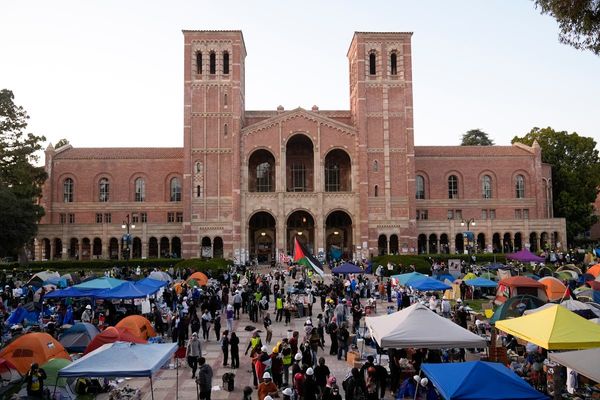
The 1950s have not had a good press. In the US the decade has long been synonymous with a retreat to political and social conservatism following the upheaval of the second world war. Senator McCarthy and his House Committee on Un-American Activities is the obvious example here, but there are many more. Women who had taken men’s jobs during the hostilities reconvened in dormitory suburbs to nest, wear pointy bras and full skirts and raise the next generation of patriotic Americans. Black servicemen who had fought alongside their white compatriots in Europe found themselves returning to a segregated south where they were required to sit at the back of the bus. The 50s, or to be more exact the period from 1946 to 1963, marked what Norman Mailer dubbed at the time the “years of conformity and depression”.
Except it didn’t, or at least not for everyone. As James Gaines shows in this revelatory study, beneath the Pleasantville surface of postwar America there churned all manner of resentment and refusal. Everywhere he looks, Gaines finds individuals who insisted on marching to their own drum, even when that brought them into direct and even dangerous conflict with the newly oppressive status quo. In the process, he sheds light on a whole range of underground movements tackling everything from race relations to working-class feminism by way of non-binary sexuality.
He starts with Harry Hay, the British-born activist who was gay at a time when neither the political left nor right would have any truck with homosexuals. (Gaines gives a shocking example: when the concentration camps were liberated by the Aallies they did not set free all the prisoners with pink triangles. Those with convictions in the Nazi courts for so much as flirting with another man were required to serve out their sentences, with no credit for time served.) Hay was himself highly conflicted. Early on he had married a “boyish girl” on the advice of a psychiatrist and adopted two daughters in an attempt to “cure” himself. Only later did he start to go against the grain until, at the age of 38 in 1950, he set up the Mattachine Society to advocate for gay rights.
The wider point here is that there was nothing simple or obvious about being a progressive in the 1950s. Hay’s campaigning brought him into direct conflict with his former comrades in the Communist party, who declared homosexuality to be not only “deviant” and “perverted” but, worse still, an expression of “bourgeois decadence”. The Mattachine Society itself split between those conservatives who wanted to run it along the lines of AA (at one point it was going to be called Bachelors Anonymous) and those who were increasingly persuaded of the need for direct political action. Gaines sees his job as not to neaten Hay’s story, making it fit one shape or another, but to point up its idiosyncrasies instead. It is, he suggests, in the stumbling quality of Hay’s journey that we see true heroism, a full two decades before the Stonewall riots and Gay Liberation made it simpler, if not exactly easier, to be out and proud.

Gaines’s great skill is to use individual life stories, with all their messy contradictions, to dislodge entrenched narratives about life in postwar America. Particularly deft is his pairing of two thinkers who never met but whose writing about the frailty of the natural world echoed one another in uncanny ways. Rachel Carson was the popular science journalist whose lyrical account of America’s coastal wildlife The Sea Around Us (1951) was serialised in the New Yorker and remained in the New York Times bestseller list for 86 weeks. Norbert Wiener, meanwhile, was the MIT mathematical prodigy whose pioneering work in weapons guidance had contributed to the allies’ victory in the second world war.
Starting from radically different places, both Carson and Wiener came to the realisation that humankind was dismayingly close to destroying itself. Carson’s final book was the apocalyptic Silent Spring (1962), in which she argued that America’s addiction to chemical pesticides was poisoning the ecosystem on which all life depended. Wiener, meanwhile, published a letter under the title A Scientist Rebels in the Atlantic Monthly in 1947, in which he warned of the government’s militarisation of scientific research and announced his refusal to participate in projects that could lead to nuclear proliferation. Both Carson and Wiener were pilloried for their apparently abrupt shifts in thinking, and both died before they had any inkling that their radical changes of heart would mark the beginning of the modern environmental movement.
Gaines is a former editor at three magazines – Time, Life and People – whose titles, taken together, provide the key strands for his braided narrative history. By attending to the experience of historical actors as they move through the world, he builds an account that is full of the complexity of lived experience. The result may not make for a simple read, but it is an infinitely rich one.
• The Fifties: An Underground History by James R Gaines is published by Simon & Schuster (£20). To support the Guardian and Observer, order your copy at guardianbookshop.com. Delivery charges may apply.







